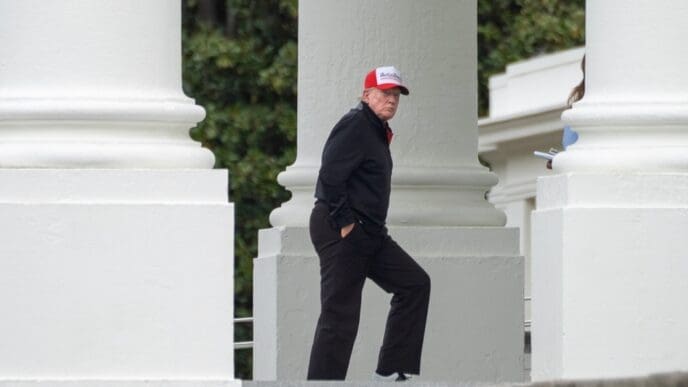For years, Mike Summers had been eager to install solar panels at his Ohio home. Following the replacement of his aging roof, his solar contractor quickly set to work. This week, Summers’ new system, comprising 19 panels and a battery backup, was successfully installed. Benefiting from approximately $10,000 in tax credits on his $39,000 investment, Summers feels fortunate, especially given the timely availability of all necessary equipment.
However, many prospective solar buyers may soon face challenges due to the ongoing trade tensions between the United States and China. The escalating trade war led by President Donald Trump is likely to disrupt the supply of solar panels and components, primarily sourced from China. This disruption is expected to increase project costs as China retaliates. As of 2022, China provided at least 80% of the necessary components for solar panels, including polysilicon, glass, and solar cells, according to a report by the International Energy Agency.
The demand for critical minerals, in which China plays a significant role, alongside electronics, further complicates the situation. In an effort to address supply chain vulnerabilities, private industry in the U.S. has invested $18.2 billion in recent years to develop a domestic supply chain for solar production. This investment was largely driven by the Inflation Reduction Act passed during the Biden administration, which aimed to bolster clean energy investment. Despite these efforts, the domestic production capacity still falls short of replacing China’s output.
As a result, costs are rising for both international and domestic manufacturers, as they prepare for the impact of tariffs. Brian DiPaolo, assistant sales manager at Cleveland-based solar installer YellowLite, noted that some customers are postponing their plans amidst the uncertainty. The company has proactively stocked up on North American-made solar panels to remain competitive. However, the increased demand for domestic equipment is driving prices up, even without direct tariff impacts.
Martin Pochtaruk, CEO of Heliene, highlighted how tariff hikes have led to increased costs for essential components, with suppliers worldwide following suit. Alexis Abramson, dean of Columbia University’s Climate School, expressed concerns that the rising costs will hinder residential solar adoption and potentially force small to mid-sized installers out of business.
Despite significant reductions in solar costs over the past decade, the future remains uncertain. The average cost of residential solar systems has dropped more than 70% since 2010, aided by technological advancements and scaling. However, the continued availability of financial incentives, including tax credits, is in question under the current administration.
Commercial and utility-scale solar projects have also seen dramatic cost reductions, contributing to substantial growth across the U.S. over the past twenty years. In 2024, the commercial and utility segments experienced notable growth, although the residential sector declined, partially due to high interest rates and political uncertainty.
Solar energy is a crucial element in the transition to cleaner energy sources, as it avoids the greenhouse gas emissions associated with fossil fuels. President Trump’s tariffs on imported solar components were initially intended to reduce dependence on China. Yet, China managed to circumvent some of these measures by shifting production to Southeast Asian countries with temporary tariff exemptions.
Abigail Ross Hopper, president and CEO of the Solar Energy Industries Association, emphasized the rapid development of the U.S. solar supply chain. Recent growth in module manufacturing capacity and the reshoring of cell production mark significant steps forward. However, sudden policy changes risk deterring investment and slowing job creation in the sector.
In light of these developments, experts encourage potential solar adopters to consider securing their installations promptly, given the shifting landscape.
The Evolving Landscape
The ongoing trade tensions and resulting tariff implications could have a significant impact on various aspects of everyday life and the broader economy. For consumers considering solar energy, the rising costs may deter investment, potentially delaying the widespread adoption of cleaner energy solutions. This could also affect the overall transition to renewable energy sources, impacting environmental sustainability efforts.
For local businesses and solar installers, the uncertainty surrounding tariff policies poses challenges to stability and growth. Increased costs and supply chain disruptions may lead to reduced margins and the potential closure of smaller enterprises. Consequently, job opportunities within the solar industry may also be affected, as businesses navigate the evolving market conditions.
On a broader scale, the shift in trade policies may influence the geopolitical landscape, with potential impacts on international relations and economic partnerships. As the U.S. seeks to strengthen its domestic supply chain, the balance of power within the global solar industry may experience shifts, affecting long-term strategic interests.











